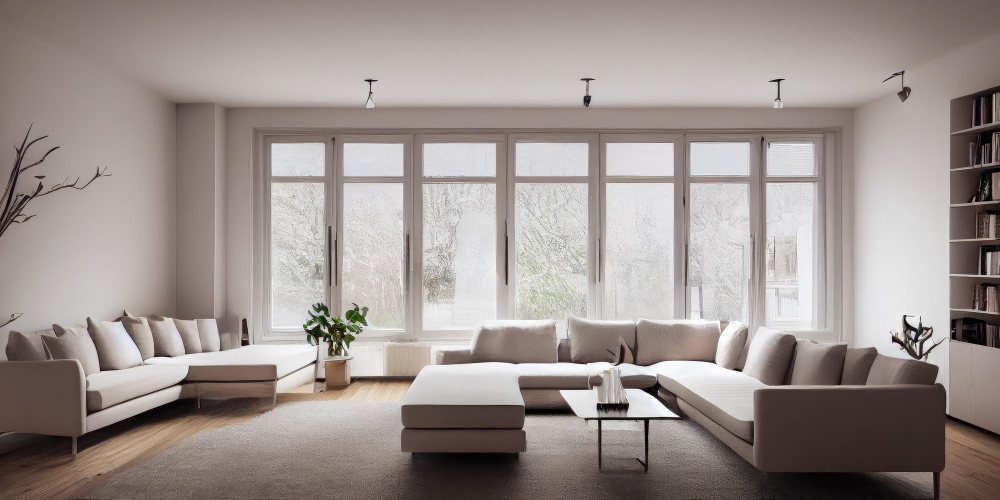
The Ultimate Guide to Designing a Spacious Living Room with Interio

Introduction: The living room is the heart of your home, where you relax, entertain guests, and spend quality time with family. Designing a spacious and welcoming living room requires a balance between comfort, style, and functionality. At Interio, we specialize in creating living rooms that maximize space while reflecting your personal style. Here’s our ultimate guide to designing a spacious living room.
- Choose the Right Layout: Optimize Flow and Functionality
The layout is key to making your living room feel open and spacious. Before selecting furniture, consider how you’ll use the space and how you want people to move through it. Some popular living room layouts include:
- Open Plan Layout: Perfect for larger rooms, an open plan layout connects your living room to adjacent spaces like the dining room or kitchen, creating a seamless flow.
- Zoned Layout: In larger rooms, you can create zones for different activities, such as a seating area for conversations and a cozy corner for reading.
- Symmetrical Layout: Arrange furniture symmetrically around a focal point (like a fireplace or TV) for a balanced and organized look.
- Asymmetrical Layout: If you prefer a more dynamic feel, arrange furniture in an asymmetrical layout to create interest without crowding the space.
Tip: Avoid pushing all furniture against the walls—pulling seating inward can make your living room feel more inviting.
- Maximize Natural Light: Open Up the Space
Light plays a crucial role in making your living room feel spacious and airy. The more natural light you have, the larger your room will appear. Here’s how to enhance natural light:
- Use Large Windows or Glass Doors: Install large windows or sliding glass doors to allow more light to flow into the room. If you have the opportunity, consider floor-to-ceiling windows.
- Opt for Light Curtains: Choose sheer or light-colored curtains to let in as much light as possible while maintaining privacy.
- Mirrors: Strategically placed mirrors can reflect natural light and create the illusion of more space.
Tip: If natural light is limited, use multiple light sources like floor lamps, sconces, and recessed lighting to brighten the space.
- Choose Multi-Functional Furniture: Save Space, Add Function
Selecting multi-functional furniture helps you maximize space without sacrificing style. Consider the following smart furniture choices:
- Sectional Sofas: A sectional sofa provides ample seating and can be customized to fit your layout, offering flexibility in a small or large space.
- Storage Ottomans: These can double as seating or a coffee table, while also offering hidden storage for blankets, books, or toys.
- Foldable or Nesting Tables: Great for small spaces, nesting tables can be pulled out when needed and tucked away to save space.
- Wall-Mounted Shelving: This frees up floor space while providing storage and display options for your favorite decor pieces.
Tip: Opt for furniture with slim profiles or legs to create an open, airy feel rather than bulky, heavy pieces.
- Use a Neutral Color Palette: Create a Sense of Openness
Light, neutral colors make a room feel bigger and more open. Here’s how to effectively use color in your living room design:
- Neutral Walls: Choose light, neutral shades like white, beige, or soft gray for the walls to create a sense of spaciousness.
- Accent Colors: Add pops of color through throw pillows, rugs, or artwork to keep the room from feeling too monotone.
- Tone-on-Tone Layers: Layer different shades of the same color (such as white and cream or light gray and silver) for a sophisticated, spacious look.
Tip: Avoid dark, heavy colors on large surfaces as they can make the room feel smaller and more closed-in.
- Incorporate Vertical Elements: Draw the Eye Upward
Drawing the eye upward can make the room feel taller and more spacious. Here are a few ways to incorporate vertical design elements:
- Tall Shelving Units: Install tall bookshelves or display units to maximize vertical space while providing storage.
- Floor-to-Ceiling Curtains: Hanging curtains from the ceiling to the floor elongates the room and adds elegance.
- Statement Lighting Fixtures: Use vertical pendant lights or chandeliers to create height and draw attention upward.
Tip: Vertical wall décor, such as a gallery wall with art or mirrors arranged in a vertical pattern, also enhances the feeling of height.
- Keep It Minimal: Less is More
When designing a spacious living room, less is often more. A minimalist approach to furniture and décor helps the room feel open and uncluttered. Here’s how to achieve this:
- Declutter Regularly: Keep only essential items and ensure storage is sufficient to prevent clutter from building up.
- Limit Furniture: Avoid overcrowding the space with too much furniture. Stick to the essentials, like a sofa, coffee table, and a couple of accent chairs.
- Simple Décor: Choose a few statement pieces rather than cluttering shelves and tables with small knick-knacks.
Tip: Maintain open space around your furniture to allow for easy movement and a more airy feel.
Conclusion:
Designing a spacious living room doesn’t mean you need a large room—it’s all about creating a layout, using colors, furniture, and lighting that make the most of your space. At Interio, we specialize in designing living rooms that balance style with functionality, ensuring your space feels open, inviting, and tailored to your needs. Contact us today to start your living room transformation!

